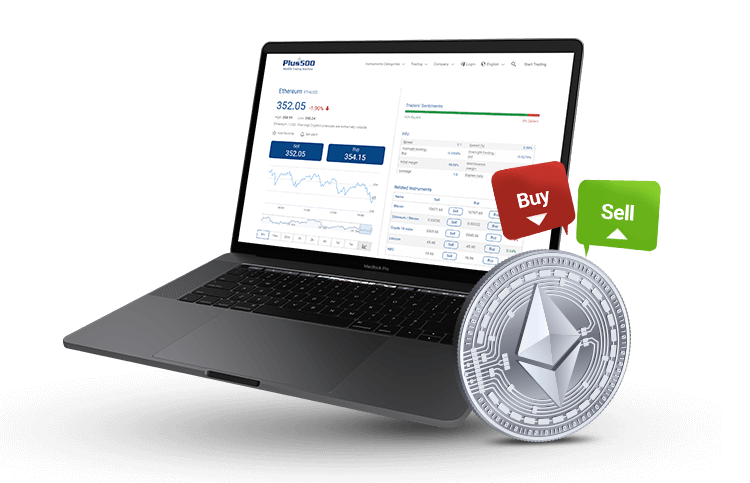The History of Ethereum: ETH Price History
Date Modified: 17/08/2025
Since its creation in 2013, Ethereum and Ether's price have grown by leaps and bounds, and this popular cryptocurrency has undergone notable changes, events, and achieved milestones.
In this article, we'll dive into Ethereum's history and key price swings:

Illustrative prices.
TL;DR
- 2013: Ethereum was proposed by Vitalik Buterin to expand blockchain use beyond Bitcoin.
- 2015: Ethereum officially launched with 72 million coins; early supporters received most of the initial supply.
- Smart Contracts & DApps: Ethereum introduced decentralised applications and smart contracts, revolutionising blockchain technology.
- Decentralised Governance: Ethereum operates with community consensus, limiting the power of central developers.
- Hard Forks & Upgrades: Ethereum has undergone several significant hard forks, both planned (e.g., The Merge, Pectra) and unplanned (e.g., DAO hack leading to Ethereum Classic).
- DAO Hack & Split (2016): A $50M theft caused a divide, birthing Ethereum Classic (ETC) and Ethereum (ETH).
ETH 2.0 & Upgrades: Ongoing enhancements like ETH 2.0 and Pectra aim to improve speed, security, and efficiency.
Price History: Ether grew from under $1 in 2015 to nearly $5,000 in 2021, with significant volatility and periodic recoveries. - 2025 Update: Pectra upgrade was completed in May 2025, and the ETH price is around $1,835.
The Creation of Ethereum
After the release of Bitcoin, blockchain quickly grabbed the imaginations of developers around the globe. In 2013 this led a Canadian developer, Vitalik Buterin, to propose a new platform which would allow for decentralised application to usher in a new era of online transactions.
In 2015, following an initial fundraiser, Ethereum was launched, and 72 million coins were minted. These initial coins were distributed to the individuals who funded the initial project.
Ethereum set out to develop a decentralised platform that would encourage the developer community to build upon what was, at the time, new technology with Smart Contracts and Dapps, which offer greater blockchain possibilities. Moreover, Ethereum has been built on a platform of transparent transactions from the beginning. While there is a central 'body' that created Ethereum and Ether, they do not hold authority over the miners who contribute to the global decentralisation of the platform. This means that the collective must agree on new protocols and processes, regardless of what the central bank body believes is best.
One of the key features of Ethereum is that it allows for both permissioned and permissionless transactions.
- Permissionless transactions allow for any computer on the Ethereum network to confirm the transaction.
- Permissioned transactions are reviewed by only a select group of computers, so all activity does not need to be exposed to all computers as long as it follows the protocols that have been set forth.
Ethereum Protocol Changes
Protocol changes, also known as hard forks, can be "planned" or "unplanned". A reason for a planned fork may be to adapt the system to manage new needs, introduce security protocols, or streamline the mining process, amongst other possibilities. Unplanned forks may be a result of discovered security flaws that some feel should not be patched, or other events that do not reach a consensus on how to address them. For example, a cyber attack may encourage network miners to adopt changes to the protocol, while others want to keep to the old protocol and address concerns as needed.
A popular example of an Ethereum protocol change is the Ethereum Pectra upgrade, which took place on 7 May 2025, and is considered one of the most significant Ethereum events.
Ethereum Hard Forks
Changes in Ethereum's protocol keep it running more efficiently and securely. Since the DAO event, there have been seven hard forks:
- Frontier (Genesis): 30 July 2015
- Homestead: 14 March 2016
- DAO Hard Fork (the split into Ethereum and Ethereum Classic): 20 July 2016.
- Byzantium: 25 October 2017.
- The Merge (transition to Proof-of-Stake): 15 September 2022.
- Shapella: 2023.
- Pectra: 7 May 2025.
Forks can be planned system upgrades or unplanned breakaways.
As proper validation and smart contracts become more vital to today's businesses, Ethereum has positioned itself to be able to address this growing need in an increasingly tech-dependent world.
ETH Price History
- 2015: Ethereum launched in July, with a price range of $0.74 - $0.92.
- 2016: Early adoption phase; price ranged roughly $1 to $15; DAO hack caused market uncertainty.
- 2017: Massive growth during the ICO boom; price surged from about $8 in January to nearly $720 by December.
- 2018: Crypto market crash; price dropped from around $1,400 in January to about $85 by December.
- 2019: Gradual recovery; price stabilised between $130 and $280.
- 2020: DeFi boom and ETH 2.0 staking launch; price rose from roughly $130 in January to $730 in December.
- 2021: ETH price skyrocketed from around $730 in January to an all-time high near $4,868 in November.
- 2022: Crypto winter and market correction; price fell from about $3,700 in January to around $880 by December.
- 2023: Recovery phase with network upgrades; price fluctuated between $1,200 and $2,000.
- 2024: Continued growth and anticipation of upgrades; price ranged roughly $1,500 to $2,200.
- 2025: Following the Pectra upgrade in May, the ETH price was around $1,835 (as of early May 2025).
Conclusion
Since its inception in 2015, Ethereum has undergone transformative changes. The bold idea to go beyond Bitcoin has become a foundational platform for decentralised innovation. With each upgrade---from Homestead to Pectra---Ethereum has shown its resilience and commitment to adapting to evolving demands. Despite fluctuations in the market and internal discussions resulting in events such as the DAO split, Ethereum continues to be a fundamental element of the blockchain industry. As businesses continue integrating blockchain solutions, Ethereum's decentralised infrastructure and smart contract capabilities place it at the heart of future digital economies.
FAQs
Ethereum enables the creation of decentralised applications (DApps) and smart contracts on a transparent and secure blockchain platform.
While Bitcoin is primarily a digital currency, Ethereum is a platform for decentralised applications and smart contracts.
A 2016 hack of the DAO led to a controversial hard fork. Ethereum (ETH) reversed the theft, while Ethereum Classic (ETC) retained the original chain.
Ethereum 2.0 refers to a major upgrade involving a shift to Proof-of-Stake, which aims to improve speed, scalability, and energy efficiency.
A hard fork is a significant change to the blockchain protocol that is not backwards-compatible. If consensus isn't reached, it often results in a split chain.
Pectra, completed in May 2025, is a major Ethereum upgrade that improves performance, security, and scalability.
Related News & Market Insights
Get more from Plus500
Expand your knowledge
Learn insights through informative videos, webinars, articles, and guides with our comprehensive Trading Academy.
Explore our +Insights
Discover what’s trending in and outside of Plus500.
Stay up-to-date
Never miss a beat with the latest News & Markets Insights on major market events.


